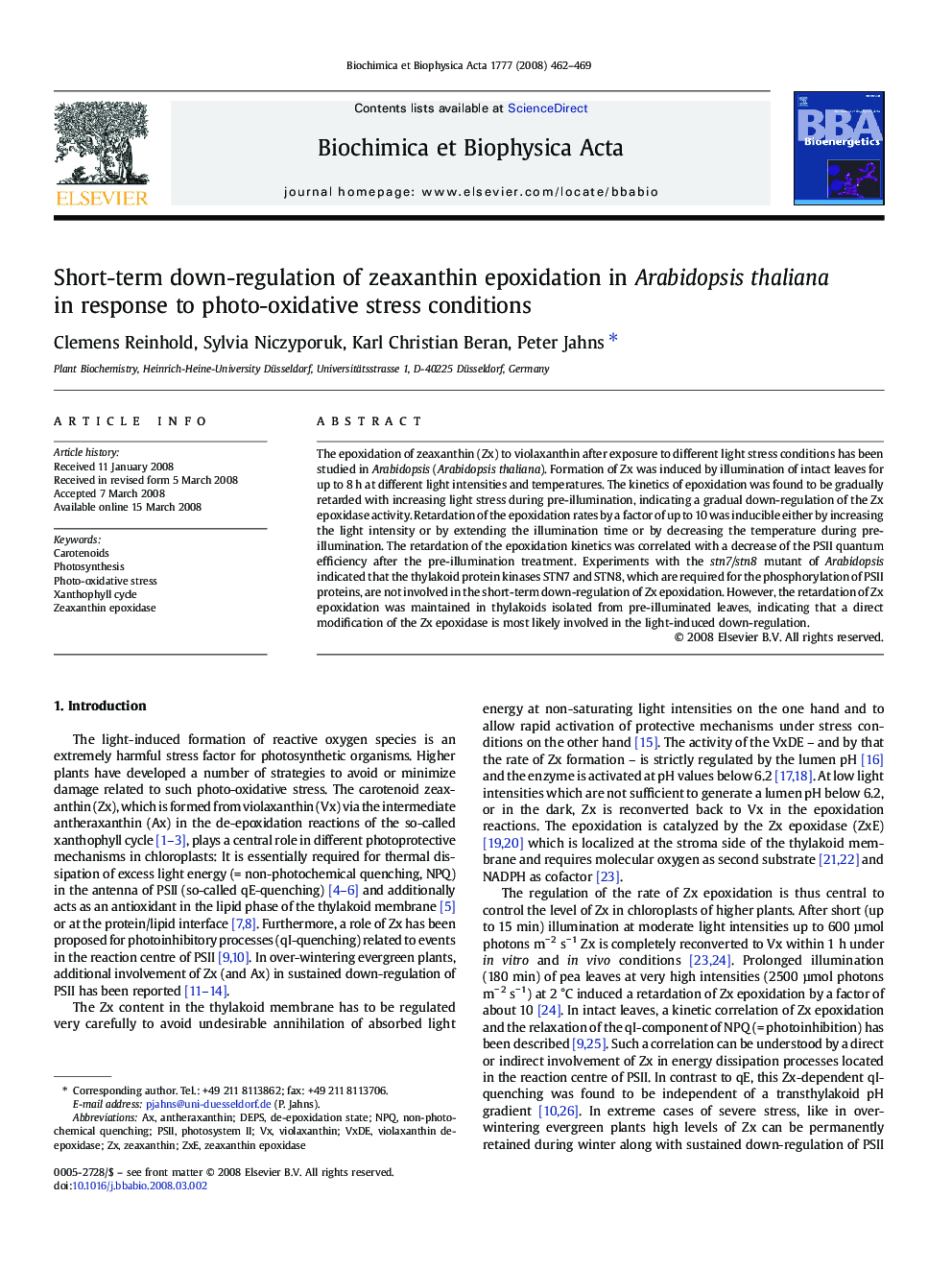| Article ID | Journal | Published Year | Pages | File Type |
|---|---|---|---|---|
| 1943405 | Biochimica et Biophysica Acta (BBA) - Bioenergetics | 2008 | 8 Pages |
The epoxidation of zeaxanthin (Zx) to violaxanthin after exposure to different light stress conditions has been studied in Arabidopsis (Arabidopsis thaliana). Formation of Zx was induced by illumination of intact leaves for up to 8 h at different light intensities and temperatures. The kinetics of epoxidation was found to be gradually retarded with increasing light stress during pre-illumination, indicating a gradual down-regulation of the Zx epoxidase activity. Retardation of the epoxidation rates by a factor of up to 10 was inducible either by increasing the light intensity or by extending the illumination time or by decreasing the temperature during pre-illumination. The retardation of the epoxidation kinetics was correlated with a decrease of the PSII quantum efficiency after the pre-illumination treatment. Experiments with the stn7/stn8 mutant of Arabidopsis indicated that the thylakoid protein kinases STN7 and STN8, which are required for the phosphorylation of PSII proteins, are not involved in the short-term down-regulation of Zx epoxidation. However, the retardation of Zx epoxidation was maintained in thylakoids isolated from pre-illuminated leaves, indicating that a direct modification of the Zx epoxidase is most likely involved in the light-induced down-regulation.
